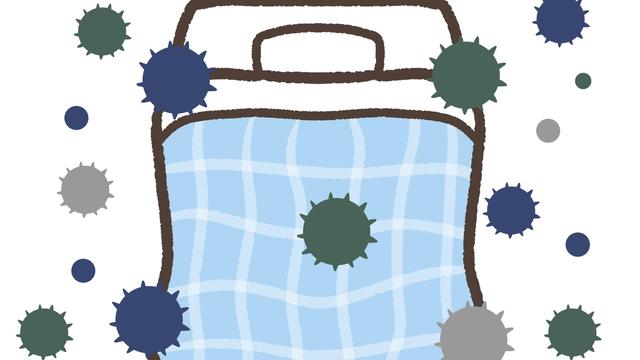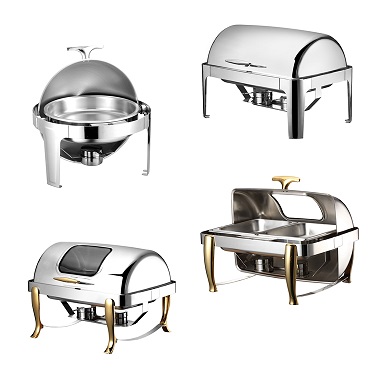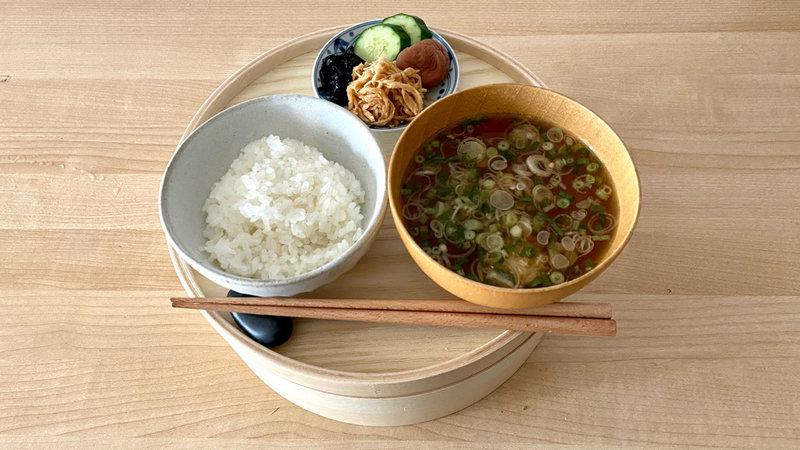"Wipe with water" and "rubbing" are counterproductive to mold, and what are the eradication methods and tips for not increasing them? (Chiaki Fujiwara) --Individual--Yahoo! News
What is mold in the first place?
June is the rainy season, and the rainy season is mold. It seems to be an associative game, but "rainy season" is read not only as "tsuyu" but also as "baiu", and " baiu " is also written as "mold rain" (mold rain). There is.
What is mold in the first place? From the time we were children, we have been practicing the small existence that seems to be harmful to our health as "Baikin", but when we write "Baikin" in Chinese characters, it is "Mold fungus" . In other words , "mold" and "fungus" . "Fungus" roughly refers to "bacteria" (although mold is a bit confusing because it is also called "fungus" as described below).
Thus, mold and bacteria tend to be treated together with something, but they are completely different organisms. Mold is a highly evolved microorganism that appeared on the earth about 1.3 billion years after the birth of bacteria, and it is a little plant. It has similar properties.
Basically, it shoots "spores" like seeds of plants that have preserved genes, "germinates" at the destination where they are carried, and grows there by growing "hyphae" like roots and stems . However, unlike plants, it does not photosynthesize, and it is necessary to take in nutrients from the outside. Organisms with such a mechanism include "mushrooms" and "yeasts", which are collectively called "fungi" together with "molds" .
Fungi break down what becomes food with enzymes that secrete it into nutrients and take it into the body. There are corpses of other creatures as food, so it has a meaning such as a "cleaner in the natural world" , but from the human side, things that you do not want to disassemble will be attached and proliferate if the environment is prepared. ..
What are the conditions for mold growth?
What is a good environment for mold? Actually, depending on the type of mold, which is said to have more than 80,000 species, it may be able to withstand even extremely extreme environments, so it cannot be said unconditionally, but it can be said only for the types of mold that are easy to see in our living environment. For example, the optimum temperature is 25 to 28 degrees Celsius, the optimum relative humidity is 60 to 80%, and there is oxygen and food . Cellulose, carbohydrates, proteins, etc. are typical foods, but it should be noted that they also include our living body itself.
What is the harm of mold?
In fact, eating a little mildewed food, for example, doesn't seem to affect us very quickly. However, "mycotoxins" can cause health problems over time, so you cannot disregard them.
Inhaling mold spores can also cause mold pneumonia , and if it grows on the skin, it can cause symptoms such as dandruff, athlete's foot , and candidiasis . It can also cause allergic symptoms such as rhinitis and asthma. In the case of allergies, the symptoms themselves are similar to those of hay fever, so I thought it would be difficult to cure hay fever, but sometimes it was due to mold . You can't leave the mold in your house as it grows.
Mold in daily life
Anyway, mold is a bath! Bathroom tile joints! It seems that there are many people who do not have an antenna for the existence of mold that grows in various parts of their lives, probably because there is an imprint like this somewhere. However , in terms of the optimum environmental conditions for mold, it is not enough to take measures against so-called "water around" . Especially in recent years, "highly airtight and highly heat-insulated" houses are prone to mold spread, and even in living rooms, mold that once grew only in bathrooms can be seen .
One day, mold does not grow suddenly, but grows with wrinkles. Visible conditions are "quite" situations, so it is still important not to ignore their existence and leave them alone.
blind spot? The following are some of the most common molds in our daily lives, including the points where they tend to become moldy. Please take care of each one.

・ Curtain ・ Coking part of sash of glass window ・Bed (mattress) ・ Bed (frame) ・ Inside drawer under bed ・ Futon (hanging, floor)・ Around foliage plants ・ Inside closet ・ Inside closet ・ Tatami ・ Japanese-style room, etc. Kibe ・ Mattress (especially the bottom of the drawer) ・ Customer's bed
・ Refrigerator vegetable room・ Refrigerator automatic ice making device (water tank)・ Refrigerator door packing ・ Food in the refrigerator (mysterious bottling, etc.) ・ Tableware (pottery, bamboo products) ・ Cutting board ・ Tableware basket ・ Lunch box packing ・ Water cylinder packing ・ Trio Double part of chopstick box such as set ・ Chopstick stand
・ Washing tub in the washing machine ・ Detergent inlet of the washing machine ・ Washing machine packing (drum type) ・ Washing table overflow hole ・ Toothbrush stand・ Bath mat ・ Bath towel
・ Bath lid ・ Shelves ・ Chairs ・ Under bottles of shampoo, etc. ・ Loofah and sponge that you do not know when they have been placed・ Sheets to be attached to walls such as multiplication tables・ Children's toys・ Ceiling・ Ventilation fan filter ・ Bathtub apron back
・ Inside the toilet tank ・ Behind the tank ・ Behind the toilet seat
・ Leather shoes ・Umbrella ・ Umbrella stand
・ Cloth diapers ・Underwear such as bras with thick pads・ Gym clothes and judo clothes for junior and senior high school students・ Athletic shoes・ Inside air conditioners ・ Inside dehumidifiers ・ Inside humidifiers ・ Inside vacuum cleaners
What are the measures to eliminate mold?
Basically, just finding mold and "wiping with water", "rubbing", "washing with detergent (surfactant)", etc. may give nutrition and water and increase it, so it is not a countermeasure. be careful.
For molds in bathrooms, kitchens, etc. that will be rinsed with water later, the molds are oxidatively decomposed and killed with a commercially available mold remover (chlorine bleach) containing "sodium hypochlorite" as the main component. Can be bleached.
In terms of washability, chlorine bleach can be used for mold that grows on cloth, etc., if the material is a material that can withstand a certain amount of strong alkali, such as cotton or polyester with white fibers. However, since the fibers begin to "decompose" when the mold grows, they may puncture or tear after the mold has been removed.
Even with cloth, chlorine bleach cannot be used for colored patterns , protein silk, wool, etc. It is often touted about how to remove mold from curtains using a mold remover, but if you try it, you are at your own risk and be careful not to cause an accident.
Early mold may be removed with a mild alkaline sodium percarbonate (oxygen bleach) . For molds such as cotton cloth diapers, you can also wash them by boiling them in oxygen bleach and soapy water .
Use a commercially available washing tub cleaner to remove mold from the washing tub of the washing machine . Depending on whether the washing machine is vertical or drum type, it is divided into chlorine type and oxygen type, and there are cases where it cannot be used, so please check carefully when purchasing.
For mold that grows on other areas that cannot be rinsed with water, spray or wipe off "rubbing alcohol" . Alcohol reaches the cell wall of the mold and can be killed by denaturing the protein, and because it is highly volatile, it dries in a short time, so it has the advantage of not leaving water in the wiped area. However, do not reuse the cloth used for wiping, but be sure to throw it away. Also, rubbing alcohol has no bleaching effect, so even if you wipe it, the pigment will remain. Just in case.
In order not to increase mold
No food and oxygen such as cellulose, sugar and protein can be eliminated from our lives, and the optimum temperature of mold also overlaps with our comfortable environment. Therefore, the only countermeasures that can be taken are to control the water, leave excess water, and prevent excessive humidity .
Therefore, in order not to increase mold, please be aware of "temperature and humidity meter" installation, humidity check, and humidity control in daily life, and adjust so that the indoor relative humidity does not greatly exceed 60% . .. Be careful not to overuse the humidifier throughout the year, provide adequate ventilation, and regularly dry or tumble dry your sweaty futons and beds.
In the bathroom, which is the most prone to mold hotbeds, try to operate the ventilation fan for 24 hours as much as possible . Even if there is a window in the bathroom, it will be dry if you also use a ventilation fan.
Also, during the rainy season, it is time to dry the laundry in the room, but please avoid drying the laundry in the bedroom . The futon absorbs moisture well, so the laundry dries. However, the futon is moldy.
[This article was jointly planned by the Yahoo! News personal editorial department and the author regarding the content, and was written by the author]






![lifehacker lifehacker LifeHacker LifeHacker A carabiner that is convenient for cutting packaging at the entrance. Excellent sharpness for medical blades! [Today's life hack tool] lifehacker lifehacker LifeHacker LifeHacker A carabiner that is convenient for cutting packaging at the entrance. Excellent sharpness for medical blades! [Today's life hack tool]](http://website-google-hk.oss-cn-hongkong.aliyuncs.com/drawing/223/2022-3-2/28016.jpeg)

![lifehacker lifehacker LifeHacker LifeHacker [2021] 7 Recommended Dishwashers | Introducing High Cospa & Compact Products lifehacker lifehacker LifeHacker LifeHacker [2021] 7 Recommended Dishwashers | Introducing High Cospa & Compact Products](http://website-google-hk.oss-cn-hongkong.aliyuncs.com/drawing/223/2022-3-2/30293.jpeg)
Kitchen Equipment Every Restaurant Needs
The IKEA wood box was a great help in preparing breakfast! There are too many other uses ~
lifehacker lifehacker LifeHacker LifeHacker [2021] 7 Recommended Dishwashers | Introducing High Cospa & Compact Products
Just put it on the cafe feeling at once!Enriched Cafe Item in Nitori (January 24, 2022) --Excite News